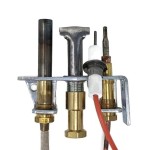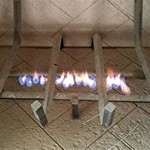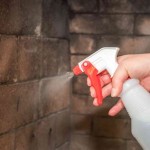Fireplace Insert Wood Pellet Stoves: A Comprehensive Guide
Fireplace insert wood pellet stoves represent a modern and efficient alternative to traditional wood-burning fireplaces and stoves. They offer a blend of classic aesthetics and contemporary technology, providing homeowners with a reliable and controllable heat source suitable for various living spaces. These inserts are designed to fit directly into existing fireplace openings, transforming an inefficient, potentially drafty fireplace into a high-performance heating appliance.
Understanding the intricacies of fireplace insert wood pellet stoves requires delving into their functionality, advantages, disadvantages, installation procedures, maintenance needs, and various models available. This knowledge equips potential buyers with the necessary information to make informed decisions about incorporating this heating solution into their homes.
Understanding the Mechanics and Benefits of Wood Pellet Inserts
A wood pellet insert operates by burning compressed wood pellets, a renewable biofuel made from recycled wood waste. These pellets are fed from a hopper, an integrated storage container, into a burn pot. An auger, a motorized screw, regulates the flow of pellets into the burn pot, ensuring a consistent and controlled burn rate. The ignited pellets produce heat, which is then distributed into the room, usually through a convection fan that forces warm air into the living space. This process offers several advantages over traditional wood-burning fireplaces.
One significant benefit is increased efficiency. Wood pellet stoves are designed to extract a high percentage of heat from the fuel, typically achieving efficiencies between 70% and 85%. This is significantly higher than the 10-30% efficiency of a traditional open fireplace. This higher efficiency translates directly into lower fuel costs and reduced environmental impact, as less fuel is needed to generate the same amount of heat.
Another major advantage is the ease of use and controllability. Unlike wood-burning fireplaces that require constant tending and monitoring, pellet stoves offer thermostatic control. Users can set a desired room temperature, and the stove will automatically adjust the fuel feed rate to maintain that temperature. This provides consistent and comfortable heating without the constant need for manual adjustments.
Furthermore, wood pellet stoves produce significantly less smoke and emissions compared to traditional wood-burning fireplaces. The controlled combustion process and the use of processed fuel result in cleaner burning, reducing particulate matter and greenhouse gas emissions. This makes them a more environmentally friendly heating option, often meeting stringent emission standards set by regulatory agencies.
Finally, the compact size and design of pellet inserts allow them to fit neatly into existing fireplace openings with minimal disruption. This eliminates the need for major renovations or structural changes, making them a practical and cost-effective alternative to replacing an entire fireplace system.
Installation Considerations for Fireplace Insert Wood Pellet Stoves
Proper installation is crucial for the safe and efficient operation of a fireplace insert wood pellet stove. It is highly recommended to hire a qualified professional installer who is experienced in handling these appliances and familiar with local building codes.
The first step in the installation process is assessing the existing fireplace and chimney. The fireplace opening must be large enough to accommodate the insert, and the chimney must be in good condition and properly lined. A stainless steel chimney liner is typically required to ensure proper venting of the exhaust gases and to prevent corrosion or damage to the existing chimney structure. The liner minimizes creosote buildup and improves draft, resulting in a safer and more efficient burn.
Next, electrical connections must be established. Pellet stoves require electricity to power the auger, fans, and control panel. A dedicated electrical circuit is often recommended to prevent overloading the existing electrical system. The installer will connect the stove to the electrical supply and ensure that all wiring is properly grounded and protected.
Once the liner and electrical connections are in place, the insert can be carefully positioned into the fireplace opening. The installer will ensure that the insert is properly sealed to prevent air leaks and that the flue connection is secure. In some cases, a surround or trim kit may be necessary to fill any gaps between the insert and the fireplace opening, creating a clean and finished look.
Finally, the installer will test the stove to ensure that it is operating correctly and safely. They will check the fuel feed rate, the combustion efficiency, and the exhaust system to verify that all components are functioning as intended. They will also provide the homeowner with instructions on how to operate and maintain the stove properly.
Maintenance and Safety Procedures for Optimal Performance
Regular maintenance is essential for ensuring the long lifespan and optimal performance of a fireplace insert wood pellet stove. Neglecting maintenance can lead to reduced efficiency, increased emissions, and potential safety hazards.
One of the most important maintenance tasks is regular cleaning. The burn pot needs to be cleaned regularly to remove ash and clinkers, which can obstruct airflow and reduce combustion efficiency. The frequency of cleaning depends on the type of pellets used and the frequency of use, but it is generally recommended to clean the burn pot at least once a week during the heating season.
The ash pan, which collects the ash that falls from the burn pot, should also be emptied regularly. Allowing the ash pan to overfill can create a fire hazard and reduce the efficiency of the stove. The ash should be disposed of properly in a metal container away from flammable materials.
The chimney should be inspected and cleaned at least once a year by a qualified chimney sweep. Creosote buildup in the chimney can create a fire hazard, and regular cleaning can prevent this from occurring. The chimney sweep will also inspect the chimney liner for any signs of damage or deterioration.
The convection fan should be cleaned periodically to remove dust and debris that can accumulate and reduce airflow. This can be done using a vacuum cleaner or a soft brush. The fan blades should be cleaned gently to avoid damaging them.
It is also essential to regularly inspect the stove for any signs of damage or wear. Check the door seal to ensure that it is airtight, and replace it if necessary. Inspect the electrical connections for any signs of loose or damaged wiring. If any problems are detected, they should be addressed promptly by a qualified technician.
Safe operation is paramount when using a fireplace insert wood pellet stove. Always follow the manufacturer's instructions for operating the stove, and never overload the hopper with pellets. Keep flammable materials away from the stove, and never leave the stove unattended while it is operating. Install carbon monoxide detectors in the home to provide early warning of any potential carbon monoxide leaks. By following these maintenance and safety procedures, homeowners can enjoy the benefits of a fireplace insert wood pellet stove for many years to come.
Beyond the core functionalities, several additional factors contribute to the overall user experience and decision-making process. These include the aesthetic design of the insert, the noise level of the convection fan, the ease of loading pellets, and the availability of advanced features such as remote control and programmable timers. These attributes vary considerably among different models and manufacturers, allowing consumers to select an insert that aligns with their specific preferences and heating requirements.
The cost of a fireplace insert wood pellet stove is another crucial consideration. The initial purchase price can range from a few thousand dollars to upwards of five thousand dollars, depending on the size, features, and brand of the insert. Installation costs can also add to the overall expense, typically ranging from several hundred to over a thousand dollars, depending on the complexity of the installation. However, the long-term cost savings associated with reduced fuel consumption and improved heating efficiency can often offset the initial investment over time.
Moreover, government incentives and rebates may be available to further reduce the upfront cost of purchasing and installing a wood pellet stove. These incentives are often offered by federal, state, and local agencies to encourage the adoption of energy-efficient heating technologies. Homeowners should research available incentives in their area to determine if they qualify for any financial assistance.
In summary, fireplace insert wood pellet stoves offer a compelling combination of efficiency, convenience, and environmental friendliness. Understanding the mechanics, installation requirements, maintenance procedures, and cost considerations is essential for making an informed decision about incorporating this heating solution into a home. By carefully evaluating these factors and selecting a model that meets their specific needs, homeowners can enjoy the benefits of a reliable and cost-effective heating source for years to come.
Choosing the right wood pellet stove insert involves considering the heating area. BTU (British Thermal Unit) output significantly contributes to how well a stove can heat a given room. The larger the space, the higher the BTU rating needed. Ignoring this can result in an insufficient heating performance, leading to discomfort during colder periods. Furthermore, selecting an oversized stove for a small space can lead to overheating and inefficient fuel consumption, essentially wasting energy and money. Therefore, it is crucial to accurately measure the room's square footage and insulation levels to determine the appropriate BTU output required for optimal heating performance.
The hopper size also plays a critical role in the operability and user-friendliness of a pellet stove insert. A larger hopper allows for longer burn times without the need to frequently refill pellets. This is especially important for those who prefer unattended operation, such as overnight or during work hours. A small hopper might require multiple refills per day, which can be inconvenient for busy individuals or those with mobility issues. Consequently, evaluating the hopper capacity in relation to heating demands and personal convenience is a significant factor when making a purchase decision.
Selecting the right type of wood pellets further impacts both the stove's efficiency and its long-term maintenance requirements. High-quality wood pellets are generally made from hardwoods and have low ash content. Lower ash content reduces the frequency of cleaning needed and minimizes the potential for clinker formation within the burn pot, which can impede airflow and reduce heating performance. In contrast, low-quality pellets often contain a higher proportion of bark, softwood, and contaminants, leading to increased ash production and potentially damaging the stove over time. Therefore, investing in high-quality wood pellets is essential for maximizing the stove's efficiency, extending its lifespan, and reducing maintenance burdens.

Pellet Fireplace Inserts Lopi Stoves Made In Usa

Pellet Fireplace Inserts Lopi Stoves Made In Usa

Fireplace Insert Stoves Wood Gas Pellet Traditional Baltimore Maryland

Pellet Fireplace Inserts Lopi Stoves Made In Usa

Wood Stoves Pellet Gas Fireplace Inserts

Pellet Fireplace Inserts Complete Home Concepts

Pellet Fireplace Inserts Insert Installation In Burlington Wi More

Castile Pellet Fireplace Insert Forge Flame

Agp Pellet Insert By Lopi Higgins Energy Alternatives

Pellet Burning Fireplace Inserts Sierra Hearth And Home
Related Posts








